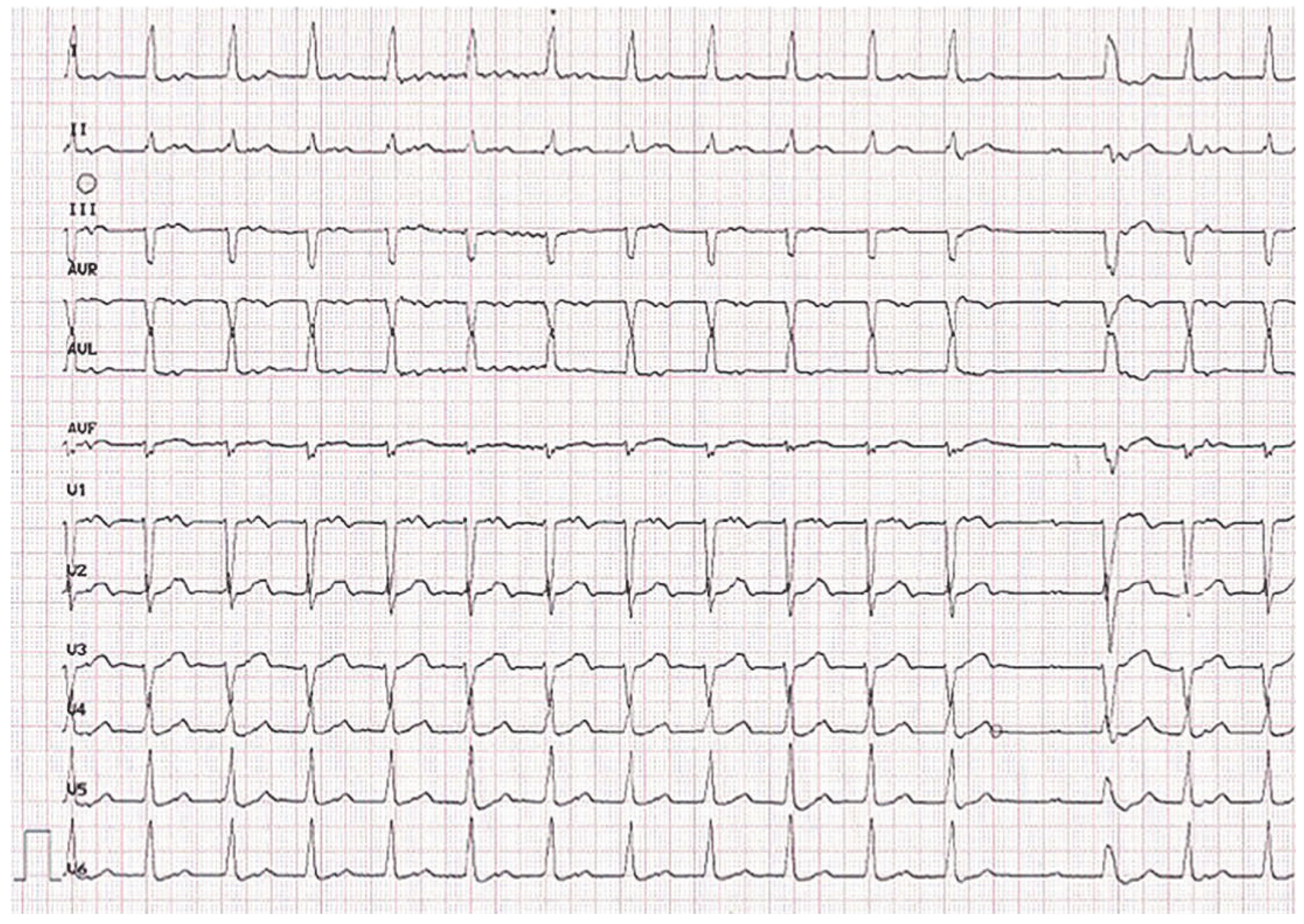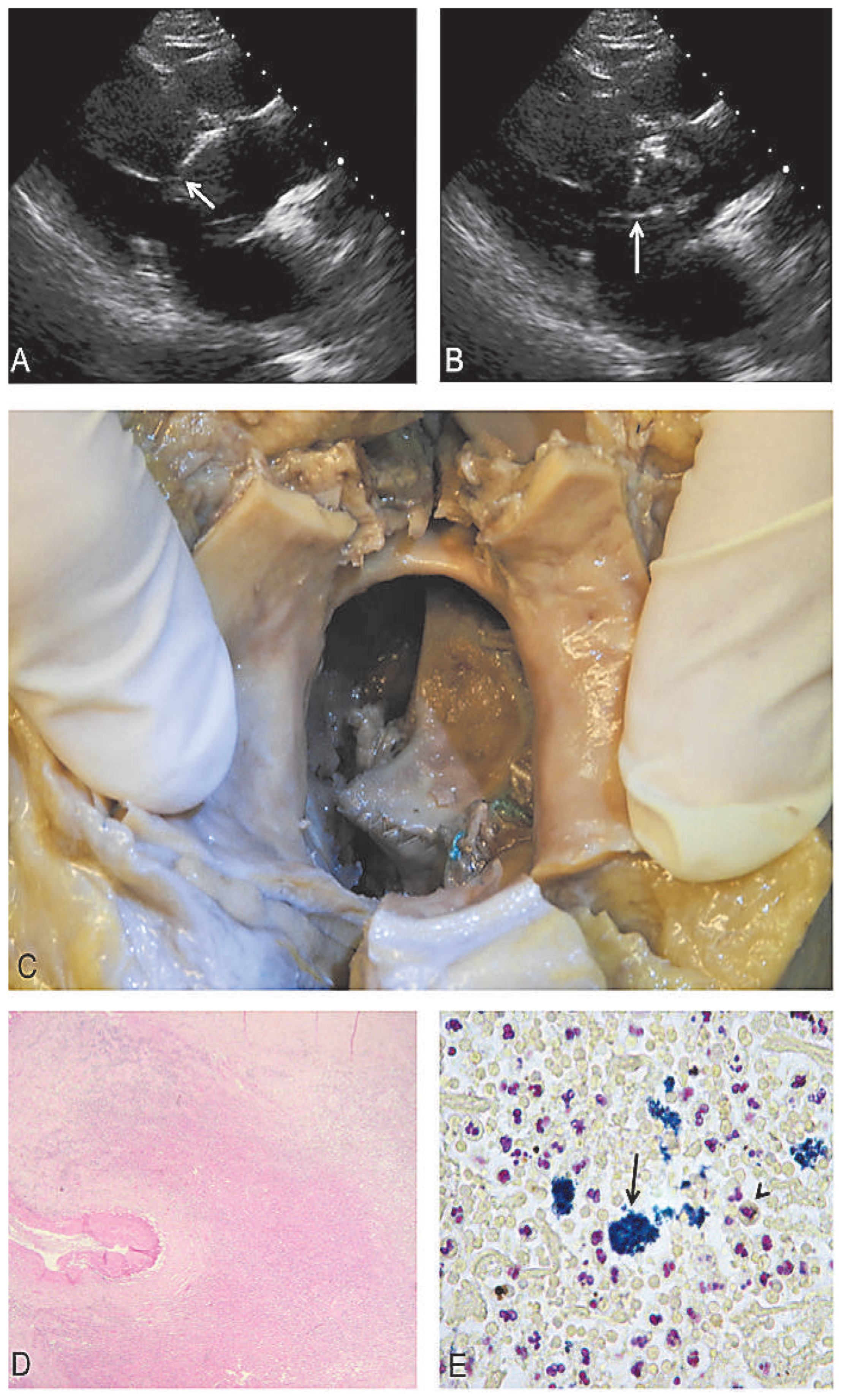Extreme Rocking Motion of an Infected Aortic Bioprosthesis
Case report
Discussion
Funding/potential competing interests
References
- Akins, C.W.; Bitondo, J.M.; Hilgenberg, A.D.; Vlahakes, G.J.; Madsen, J.C.; MacGillivray, T.E. Early and late results of the surgical correction of cardiac prosthetic paravalvular leaks. J Heart Valve Dis. 2005, 14, 792–799. [Google Scholar] [PubMed]
- Genoni, M.; Franzen, D.; Vogt, P.; Seifert, B.; Jenni, R.; Künzli, A.; et al. Paravalvular leakage aher mitral valve replacement: improved long-term survival with aggressive surgery? Eur J Cardiothorac Surg. 2000, 17, 14–19. [Google Scholar] [CrossRef] [PubMed]
- Gonzalez-Ferrer, J.J.; Fernandez-Jimenez, R.; Perez de Isla, L.; Rocafort, A.G.; Zamorano, J.L. Rocking aortic valve prosthesis: a 3-dimensional transesophageal echocardiography view. J Am Coll Cardiol. 2010, 55, e135. [Google Scholar] [CrossRef][Green Version]
- Stoney, R.J.; Kitts, D.J.; Bongard, F.S. Septic embolism complicating infective endocarditis. J Vasc Surg. 1991, 14, 480–487. [Google Scholar] [CrossRef]
- Metz, E.; Hartmann, M.; von Birgelen, C.; Haalebos, M.M.; Verhorst, P.M. Major dehiscence of infected aortic valve prosthesis with “rocking motion” but without diastolic paravalvular regurgitation. Int J Cardiovasc Imaging. 2006, 22, 771–774. [Google Scholar] [CrossRef] [PubMed]


© 2015 by the author. Attribution-Non-Commercial-NoDerivatives 4.0.
Share and Cite
Noble, S.; Maillefer, A.; Cikirikcioglu, M. Extreme Rocking Motion of an Infected Aortic Bioprosthesis. Cardiovasc. Med. 2015, 18, 34. https://doi.org/10.4414/cvm.2015.00301
Noble S, Maillefer A, Cikirikcioglu M. Extreme Rocking Motion of an Infected Aortic Bioprosthesis. Cardiovascular Medicine. 2015; 18(1):34. https://doi.org/10.4414/cvm.2015.00301
Chicago/Turabian StyleNoble, Stéphane, Aude Maillefer, and Mustafa Cikirikcioglu. 2015. "Extreme Rocking Motion of an Infected Aortic Bioprosthesis" Cardiovascular Medicine 18, no. 1: 34. https://doi.org/10.4414/cvm.2015.00301
APA StyleNoble, S., Maillefer, A., & Cikirikcioglu, M. (2015). Extreme Rocking Motion of an Infected Aortic Bioprosthesis. Cardiovascular Medicine, 18(1), 34. https://doi.org/10.4414/cvm.2015.00301



